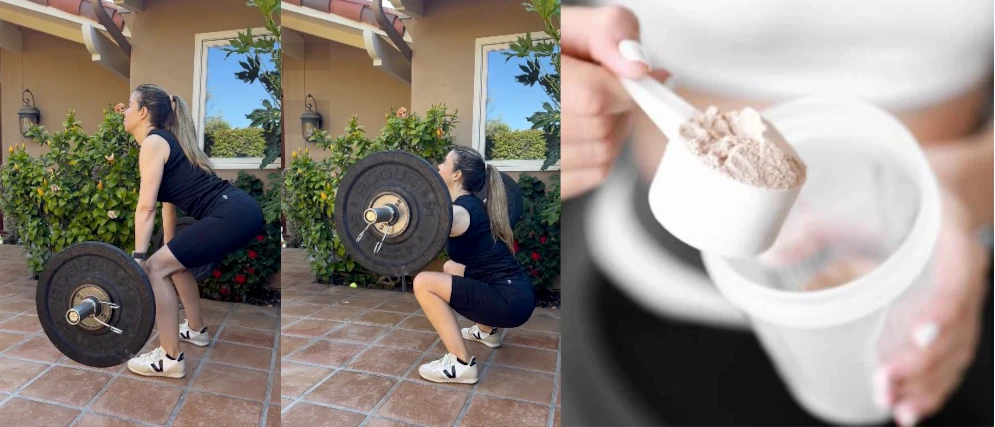In this post we’ll look at the supplements Rhonda takes currently.
Noting she has no affiliation with the brands mentioned.
The post was last updated in June 2025 – see the change log.
Follow the supplement links in the table below to learn the details behind why she takes each supplement and her brand preferences. Also see her top 5 supplements.
Rhonda Patrick’s Supplements:
| Supplement | Dose / Info |
|---|---|
| Morning | |
| Creatine | 2x 5 grams of creatine, separately, in coffee |
| Glutamine | 5 grams |
| Beet Extract | 1 tbsp on days of endurance exercise |
| With Breakfast | |
| Fish Oil | 1 gram |
| Alpha Lipoic Acid | 600 mg daily for mitochondrial benefits |
| Sulforaphane | Avmacol Extra Strength 2x tablets |
| Afternoon | |
| Multivitamin | ONE multivitamin – 1x pill daily |
| Cocoa Extract | Cocoavia – 3 capsules or 1 scoop |
| PQQ | 20 mg daily, may help cognitively |
| Evening | |
| Magnesium | Magnesium Glycinate – 120 mg |
| Vitamin D | 2,000 IU |
| Vitamin K2 | 100 mcg of K2, MK7 |
| Fish Oil | Second gram of fish oil |
| Melatonin | 10 mg before bed – reduces her night terrors |
| Vitamin C | 600 mg per capsule |
| Ubiquinol | 100 mg per day |
| Inositol | 2 grams – to aid with sleep |
| Taken Intermittently | |
| Protein Powder | For days when extra protein is required |
| Collagen Powder | For improved joint, skin and hair health |
| Curcumin | Occasionally used as a weak painkiller |
| Choline | Supplemented when at a deficit |
| Probiotics | Taken post-antibiotics or alcohol |
| Nootropic Drink | Taken for a temporary cognitive boost |
| When exposed to viral risk | |
| Vitamin C – Liposomal | 1 gram per dose |
| Zinc Lozenges | 80-100mg dose |
Not Currently Taking
- See this article for supplements Rhonda has previously taken, then stopped. Including Nicotinamide Riboside, Resveratrol, Metformin and Athletic Greens.
To jump to a section, expand the table of contents below:
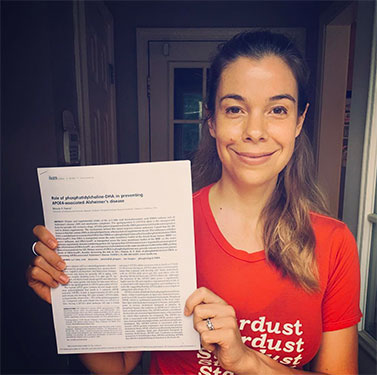
Morning Supplements
Rhonda recently broke down her supplement list by time of day, and so I’ve reflected this in the order of the supplements below.
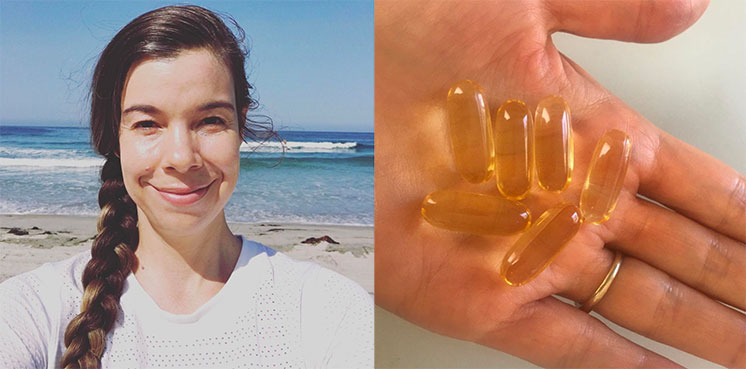
Creatine
Rhonda currently supplements 10g of creatine per day, often split into 2x 5g doses.
She quotes the following reasons for taking it:
- It boosts ATP production to fuel your muscles, enhancing muscle strength and recovery.
- It sharpens cognitive function.
The brand she mentions taking is Thorne – Creatine (see 20% off coupon code), which uses creatine monohydrate (the most common form).
In terms of how she takes it, Rhonda mentions putting it into her coffee for at least one of the two doses. Noting that she doesn’t believe the heat of the coffee would denature the creatine.
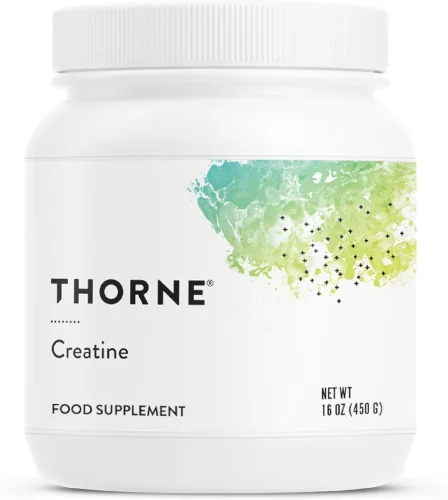
Thorne branded creatine is expensive, and creatine arguably shouldn’t have to be. Other brands include:
- NOW – Creatine Monohydrate – 500g powder (micronized) – (see 20% off coupon code)
- Optimum Nutrition – Creatine Monohydrate – 600g powder (micronized) – (see 20% off coupon code)
Glutamine
Rhonda currently supplements 5 grams of glutamine per day.
Glutamine is an amino acid used in high quantities by the body, especially by muscle tissues.
She currently takes the Thorne – Glutamine (see 20% off coupon code)

Beet Extract
On days of endurance exercise or when she’s due to record a podcast, Rhonda takes 1 tablespoon of beetroot extract.
Beets contain precursors (nitrate) to nitric oxide, which is a vasodilator, increasing blood flow to areas of the body that need it. During exercise this means increased transport of oxygen and nutrition (glucose, lipids, etc) into areas such as skeletal muscle.
Worth noting that this meta-analysis found the peak value of nitrate (the pre-cursor to nitric oxide) occurred 2-3 hours after ingestion. Therefore, consuming the beet powder about 90 minutes before exercise is best. Consuming them just before would not maximize the benefits.
The brand Rhonda mentions using is NOW – Beet Extract, which is NSF certified.
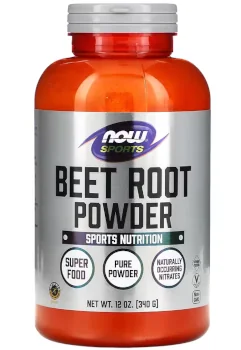
With Breakfast
Omega-3 Fish Oil
In Rhonda’s latest Oct 2024 update, she mentioned taking Metagenics OmegaGenics EPA-DHA 2400mg liquid fish oil (see 20% off coupon code).
Each bottle contains 30 servings of ~1 gram of DHA and 1.4 grams of EPA.
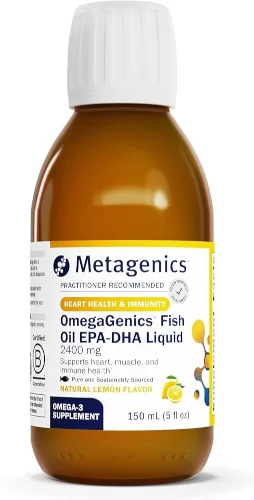
Dose: In Rhonda’s June 2025 update she mentioned taking 2 grams daily – comprising of 1 gram with breakfast and 1 gram in the evening.
This is a lot less than the 4 grams daily she had previously been taking. In the Q&A the reason she gave for dropping her dose is:
- Her latest Omega-3 Index test (see more on this below) gave her a score of 16, which she decided is higher than it needs to be. Stating she’d be happy at 10 or 12.
Alternatives? Previously, Rhonda was taking a fish oil product from Norway that wasn’t sold internationally. When people asked for tips on sourcing a fish oil product, she suggested using the IFOS website to check brands for their quality, and specifically their oxidation score. If you’re someone who prefers capsules to liquids, a product that gets good scores on the IFOS site is:
- Viva Naturals Omega-3 Fish Oil – 1.25 grams per capsule
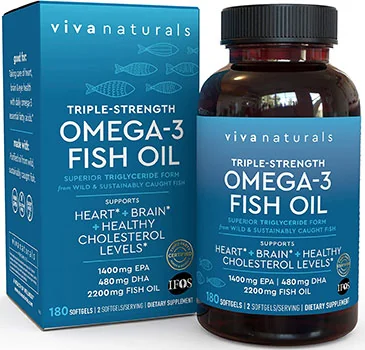
Vegetarian / Vegan Fish Oil Alternatives?
Rhonda personally opts to get her omega-3s from fish oil, due to its high levels of EPA & DHA per gram.
However, when asked on Joe Rogan’s podcast how vegetarians can supplement EPA & DHA, she believed algae oil is the optimal source.
In part, this is because fish don’t actually produce omega-3s, instead they get them from the plankton and algae in their diet – so by consuming algae you’re going direct to the source1Omega-3: A Link between Global Climate Change and Human Health – Jing X. Kang | 2011 | Biotechnology Advances.

In a non-supplemented vegetarian/vegan diet, the primary source of omega-3 fatty acids comes from alpha-linolenic acid (ALA), which is found in various plants (particularly flaxseed).
However, the omega-3s EPA & DHA are also important to humans, so relying on ALA solely has a few issues:
- ALA is weakly converted to EPA – Research estimates between 0.2% to 6% of ALA is converted to EPA2Metabolism of α-linolenic acid in humans – G.C. Burdge | (see section 7.2 of paper) | 2006 | Journal: PLEFA. This aligns with a presentation by Dr Bill Harris, the omega-3 expert Rhonda interviewed, where he estimates less than 5% of ALA is converted to EPA (link).
- ALA barely converts to DHA – The same research paper above estimates 0.05% or less of ALA is converted to DHA.3Metabolism of α-linolenic acid in humans – G.C. Burdge | (see section 7.2 of paper) | 2006 | Journal: PLEFA. In Dr Bill Harris’ presentation above, he similarly estimates less than 0.1% of ALA is converted to DHA.
- This aligns with research showing that vegetarians and vegans have lower levels of EPA & DHA compared to those who eat fish4Blood docosahexaenoic acid and eicosapentaenoic acid in vegans: Associations with age and gender and effects of an algal-derived omega-3 fatty acid supplement – Sarter et al. | 2014 | Clinical Nutrition.
The good news is that research shows algae based omega-3s will raise EPA & DHA levels in vegans, even at relatively low dose5Blood docosahexaenoic acid and eicosapentaenoic acid in vegans: Associations with age and gender and effects of an algal-derived omega-3 fatty acid supplement – Sarter et al. | 2014 | Clinical Nutrition. A study showed their omega-3 index score went from 3.1 to 4.8 after 4 months of taking 172mg DHA & 82mg of EPA per day.
Below are a couple of algae based omega-3s, so you can see their cost per gram of EPA & DHAs:
| Name | Price | Quantity | Flavored? | EPA/DHA $/gram |
| Source Naturals - Non-Fish Omega-3s | $15 with coupon | 30 soft gels | Sorbitol sweetener | $5.44 / $2.72 |
| Sun Warrior - Algae-Based Omega-3 | $20 with coupon | 60 soft gels | Maltitol sweetener | $5.89 / $1.33 |
| Deva - Vegan Omega-3 | $32 with coupon | 60 soft gels | Vegetable glycerin | $3.55 / $1.77 |
The Omega-3 Index Test

^ Rhonda recently interviewed Omega-3 expert Dr Bill Harris (link)
Rhonda notes in her recent Joe Rogan interview (#1701) that she’s a proponent of what’s called the “omega-3 index test”. Mentioning that higher levels are associated with a lower risk of all-cause mortality6Blood n-3 fatty acid levels and total and cause-specific mortality from 17 prospective studies – Harris et al. | 2021 | Nature Communications.
In essence, it measures the omega-3 fatty acids in your red blood cells, expressed as a percentage of the total fatty acids. With a score of 8% or greater being correlated with better health outcomes7The Omega-3 Index: Clinical Utility for Therapeutic Intervention | William Harris | 2010 | Current Cardiology Reports.
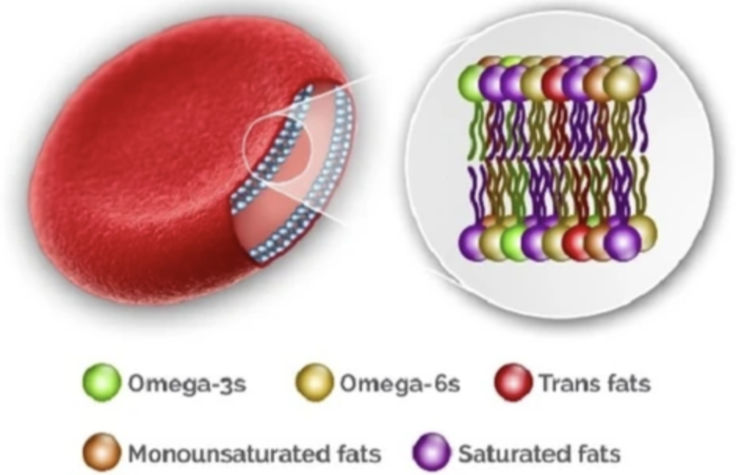
The company that makes this test, OmegaQuant, offers it as an at-home “dried blood spot” test. Fortunately, it doesn’t require much blood, just a single drop onto a piece of card, which you then post back. OmegaQuant was founded by Bill Harris whom Rhonda interviewed recently. The test comes in 3 versions:
- Omega-3 Index Basic Test ($49) – which provides the omega-3 index score only
- Omega-3 Index Plus Test ($74) – which provides the index score + trans fat index, omega-6 to omega-3 ratio & AA:EPA ratio (inflammation marker)
- Omega-3 Index Complete Test ($99) – which provides everything in the Plus test, and then in addition includes a trans fat index & individual fatty acid levels
For 10% off the tests, use this OmegaQuant coupon code.
Fish Oil No Longer Taken
It’s worth clarifying which fish oil supplements Rhonda isn’t taking anymore – for avoidance of confusion. She no longer takes:
- Nordic Naturals – ProOmega 2000 – she took this up until around 2017 (see last tweet mentioning). Not to be confused with the supplement she recently mentioned – Carlson Maximum Omega 2000. Since she stopped with Nordic Naturals, she has been taking NPure-3.
- Nordic Naturals – Omega-3 Phospholipids – she took this up until around 2016 (see last tweet mentioning).
- Krill Oil – before taking the Omega-3 phospholipids supplement by Nordic Naturals, she was taking krill oil.
Alpha Lipoic Acid
Rhonda began taking Alpha Lipoic Acid (ALA) around May 2023, and as of her June 2025 Q&A she’s still taking it.
ALA is a naturally occurring compound found in our diets.
It plays a vital role in metabolism, specifically in the citric acid cycle which is a series of chemical reactions that take place in mitochondrial energy production (source).
It’s also an antioxidant, so it can scavenge reactive oxygen species and help regenerate other antioxidants, such as vitamin C, vitamin E, and glutathione8The pharmacology of the antioxidant lipoic acid, Bianchetti | 1997 | General Pharmacology.
Based on this, I assume that Rhonda started taking ALA in conjunction with L-Carnitine, for the potential mitochondrial benefits. With the antioxidant properties being an additional potential benefit.
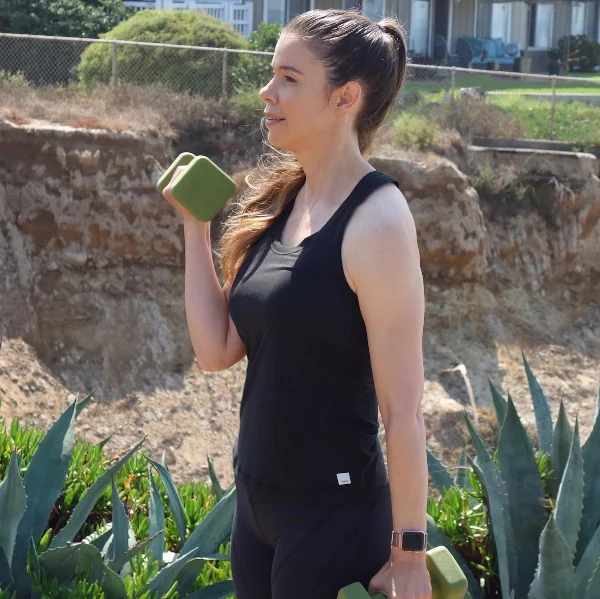
Rhonda says she takes Pure Encapsulations 600 mg ALA product.
It’s worth noting that ALA comes in two forms; S and R. R form is the form that the human body produces. However, when synthesizing ALA, the output contains a 50/50 split of S & R. This means that if a product only says Alpha Lipoic Acid, it will contain 50% of both. It’s more expensive to isolate the R-only form, but some supplements do offer it.
Examples of ALA products include:
- Pure Encapsulations – Alpha Lipoic Acid – 600 mg (see 20% off coupon code)
- Swanson – Alpha Lipoic Acid – 600 mg (see 20% off coupon code)
- Thorne – Alpha Lipoic Acid – 300 mg (see 20% off coupon code)
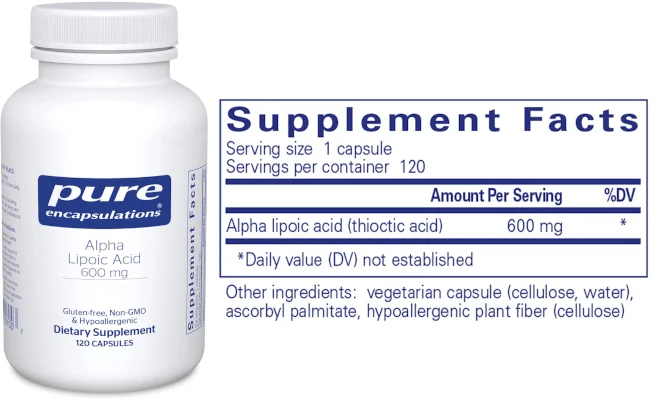
Sulforaphane
Rhonda’s a big proponent of the benefits of sulforaphane and has talked about it a lot.
For extensive details, see this separate post where we look at what sulforaphane is, why it’s important, and the various forms Rhonda consumes it in, including self-grown broccoli sprouts.
Currently, Rhonda is consuming sulforaphane in 2 forms; Avmacol tablets and moringa powder. Note: since having her son she has less time for growing broccoli sprouts.
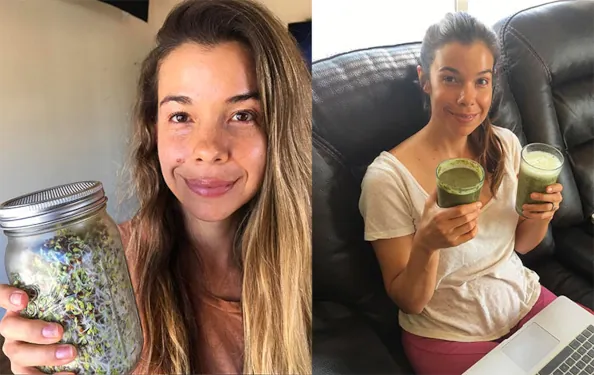
Avmacol
Whilst there are pure sulforaphane products like Broq and Prostaphane, Avmacol is a combination of Glucoraphanin (broccoli seed extract) and myrocinase, the enzyme needed to convert glucoraphanin into sulforaphane.
It’s currently available in 2 strengths:
| Product | Glucoraphanin Content | Sulforaphane Content |
| Avmacol – Regular | ~15 mg | 5.25 mg* |
| Avmacol – Extra | ~30 mg | 10.5 mg* |
*Assuming 35% bioavailability, based on Jed Fahey’s research
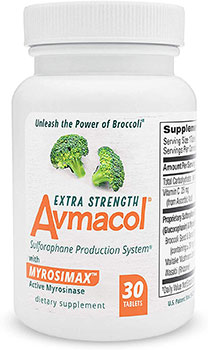
Dose: 2 tablets per day of Amacol Extra Strength.
BROQ and Sulforaphane
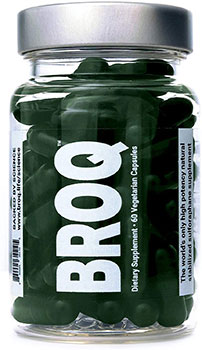
Prior to switching to Avmacol, Rhonda was initially taking pure sulforaphane tablets (imported from Europe) called Prostaphane, and then later BROQ, a US version.
BROQ ships from USA to:
- USA, Canada, UK & Australia
For those elsewhere, a UK company called Vitality Pro ships Prostaphane internationally (product link). Prostaphane is 10 mg per capsule, the same dose as Broq.
Moringa Powder
Rhonda added Moringa powder to her diet after research from Jed Fahey at Johns Hopkins University.
Moringa is derived from the leaves of the Drumstick Tree, which are harvested, dried and then powdered.
It contains an isothiocynate with very similar properties to sulforaphane, called Moringin.
In Jed’s studies on Moringa, participants consumed it as a cold-brewed tea. This can be made by:
- Adding moringa powder to room temperature water at a ratio of 1:100 powder to water
- Leaving to stand for at least 10 minutes prior to drinking
- The reason for avoiding hot water is that the myrosinase enzyme in moringa is sensitive to heat, and it’s crucial to preserve it.
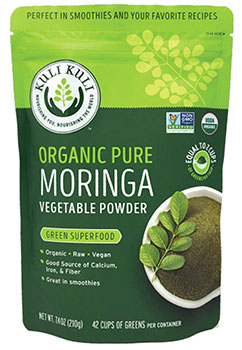
In terms of which Moringa to use, Jed’s studies used Kuli Kuli Moringa (15% off coupon code here). He notes in their FAQs that excessive sunlight or heat after harvest will rapidly degrade some of the phytochemicals and vitamins of interest in the leaves – so it’s worth caution when sourcing.
As mentioned above, for more details on Rhonda’s use of sulforaphane see this separate post.
Afternoon
Multivitamin
Whilst Rhonda’s goal is to get her micronutrients from her diet, taking a multivitamin avoids the risk of a shortfall if her diet doesn’t provide 100% of her needs.
Previously she alternated between Pure Encapsulations ONE and Thorne – Basic Nutrients 2/Day.
However, in her October 2024 update, she only mentioned taking Pure Encapsulations ONE (see 20% off coupon code).
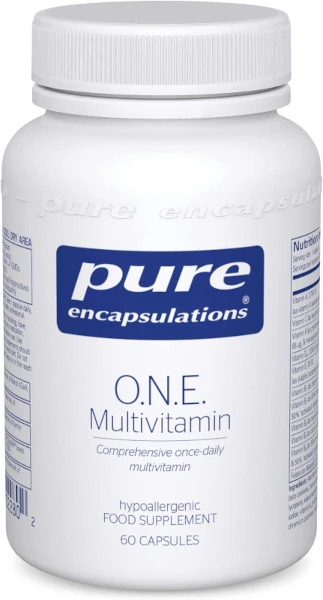
Micronutrients, a subset of which are referred to as vitamins and minerals, are regarded as essential if experiments show that humans get sick in their absence. There are over 40 (!) different essential micronutrients we need to consume, in order to stay healthy.
Rhonda’s early mentor, Bruce Ames, researched what happens when our bodies have insufficient levels of micronutrients, and found that our bodies prioritize the scarce nutrients for functions related to survival and reproduction. De-prioritizing other functions, such as those that could aid in longevity.

Cocoa Extract
As of Rhonda’s June 2025 Q&A she is still taking Cocoavia.
She mentions taking 3 capsules per day or 1 scoop.
Specifically, their Cardio Health version, which she takes in the morning due to it containing a small amount of caffeine (for 15% off, you can use this coupon code).
She also uses the Cardio Health powdered version, mixing it into drinks or smoothies, giving them a cocoa flavor. It doesn’t contain any sugar.
Both the powdered and capsule versions of Cardio Health are 500 mg of cocoa flavanols per serving (1 scoop or 2 capsules). Rhonda says she takes 3 capsules, so that’ll take it to 750 mg of cocoa flavanols.
Rhonda cites 3 potential benefits of cocoa flavanols:
- Enhanced circulation
- Improved cognitive function
- Improvements to skin (decreased wrinkles and increased skin elasticity)
See the studies Rhonda mentions in regard to enhanced circulation:
- Dark chocolate (85% cocoa), but not milk chocolate (35% cocoa), improved walking ability in elderly patients with peripheral artery disease9Dark Chocolate Acutely Improves Walking Autonomy in Patients With Peripheral Artery Disease – Violi et al. (2014).
- Increased endurance performance in young male cyclists who consumed dark chocolate – showing a performance increase of 17% vs consuming white chocolate10Dark chocolate supplementation reduces the oxygen cost of moderate intensity cycling – Patel et al. (2015).
- Cocoa consumption decreases blood pressure in healthy individuals, in a dose-dependent manner11Cocoa consumption dose-dependently improves flow-mediated dilation and arterial stiffness decreasing blood pressure in healthy individuals – Claudio et al. (2015).
Then studies in regard to enhanced cognition:
- Increased cognition in young adults, measured via a cognitively demanding test12The effect of flavanol-rich cocoa on the fMRI response to a cognitive task in healthy young people – Francis et al (2006)
- Protection from cognitive decline in the elderly13Benefits in cognitive function, blood pressure, and insulin resistance through cocoa flavanol consumption in elderly subjects with mild cognitive impairment: the Cocoa, Cognition, and Aging (CoCoA) study – Desideri et al. (2012).
Then lastly, a Korean study showed 320mg of cocoa daily reduced wrinkles and increased skin elasticity (measured after 24 weeks)14Cocoa Flavanol Supplementation Influences Skin Conditions of Photo-Aged Women: A 24-Week Double-Blind, Randomized, Controlled Trial – Chung et al. (2015).

Of course, it’s worth noting that the amount of cocoa in regular chocolate is low – so you want to be consuming high cacao content products to receive these benefits. The studies above specifically reference the cocoa flavanol content as a quantitative marker, and CocoaVia contains 500mg of cocoa flavanols per serving.
In an Instagram post (link) Rhonda mentions studies have shown that many cocoa products have high levels of cadmium and lead15Cadmium and lead in cocoa powder and chocolate products in the US Market – Abt et al (2017). That’s a blow for dark chocolate fans (myself included) who hadn’t considered heavy metal consumption might be a risk. She goes on to say that in this Consumer Lab report, the CocoaVia brand was shown to have almost undetectable levels of cadmium and lead – making it a safe option, and a key reason she opted for it.
It’s perhaps worth noting that CocoaVia also has a product called Memory+ (in a blue bottle).
It’s a higher dose per serving (750mg vs 500mg), which is based on clinical studies16Cocoa flavanol consumption improves cognitive function, blood pressure control, and metabolic profile in elderly subjects: the Cocoa, Cognition, and Aging (CoCoA) Study—a randomized controlled trial – Mastroiacovo et al. (2014)17Enhancing dentate gyrus function with dietary flavanols improves cognition in older adults – Brickman et al. (2014) that showed this dose improves word recall and led to faster spatial memory versus the placebo.
Interestingly, the Memory+ version is $2.22 per gram of cocoa flavanols, versus $3 per gram with Cardio Health, before discount coupons.
Rhonda’s Dosage: 2 capsules or 1 scoop per day, in the morning.

PQQ (Pyrroloquinoline Quinone)
PQQ is a compound found in plants that have been found to decrease inflammation and improve mitochondrial efficacy in humans.18Dietary pyrroloquinoline quinone (PQQ) alters indicators of inflammation and mitochondrial-related metabolism in human subjects – Harris et al (2013). That said, it’s still relatively under-studied compared to other supplements.

In a paper published in 2016, Japanese researchers found that PQQ improves cognitive function (measured using the stroop test), by increasing blood flow and oxygen metabolism to the right prefrontal cortex19Effect of the Antioxidant Supplement Pyrroloquinoline Quinone Disodium Salt (BioPQQ) on Cognitive Functions – Itoh et al (2016).
Rhonda mentioned in her June 2025 Q&A that she’s continuing to take Life Extension- PQQ 20mg (see 20% off coupon code) capsules daily – although didn’t mention the specific time of day (morning or evening).
The Life Extension version comes in the disodium salt form that was used in the above study.
Rhonda’s Dosage: 1 capsule
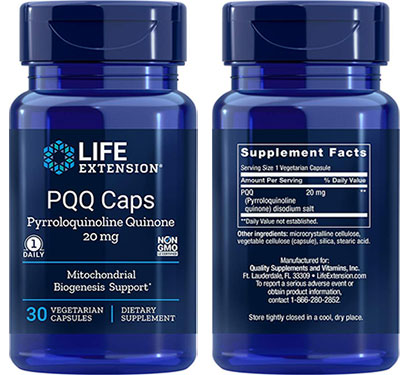
Evening Supplements
In this next section, we’ll look at the supplements Rhonda takes in the evenings.

Magnesium
Rhonda notes that her multivitamin doesn’t contain Magnesium, therefore she adds it separately.
In her October 2024 Q&A she re-iterated taking 120 mg of magnesium daily.
120 mg is only around 35% of the NIH RDA (350 mg), as she aims to get the majority of magnesium from her diet.
However, for example with her mother, who doesn’t eat as many green vegetables, she encourages a larger supplemental dose.
Rhonda describes getting adequate magnesium as a “long-term investment”.
Magnesium is a co-factor for over 300 enzymes in the body. Many of those enzymes have to do with energy production and energy utilization. So it makes sense you’d want it for preventing muscle cramps and things like that. But, Rhonda says, it’s also important for repairing damage to the body, because magnesium is very important for DNA repair enzymes. That’s not something that’s going to show up acutely like a muscle cramp. DNA damage is something you’ll never know about, so making sure you get enough magnesium is extremely important for the aging process.
Rhonda likes to emphasize that leafy green vegetables are a particularly good source of magnesium. This is because magnesium composes part of the chlorophyll molecule, the green pigment in plants that helps absorb light. So, if you see leafy green vegetables, you know you’ll be able to get some of the bound-up magnesium from it. Approximately 1/2 the US population is thought to be deficient in magnesium20Suboptimal magnesium status in the United States: are the health consequences underestimated? – Rosanoff et al. (2012)
Other foods high in magnesium include avocados, almonds, oats and peanut butter (see full list here).
The specific Magnesium supplement Rhonda mentions taking is Pure Encapsulations Magnesium Glycinate (see 20% off coupon code).
Other lower cost Magnesium Glycinate options include:
- Carlson – Magnesium Glycinate – 200 mg (see 20% off coupon code)
- NOW – Magnesium Glycinate – 200 mg (see 20% off coupon code)
Rhonda’s Dosage: 120 mg / daily

As of the October 2024 Q&A Rhonda continues taking a specific magnesium product at night before bed, called Magnesi-Om, berry flavour (20% off coupon code here).
It’s a blend of magnesium gluconate, magnesium acetyl taurinate and magnesium citrate, coupled with l-theanine. There’s a little monk fruit too, which sweetens the mixture. They also offer it in lemon and unflavoured.

Vitamin D

In Rhonda’s June 2025 Q&A she mentioned taking 2,000 IU extra per day, in addition to the 2,000 IU in her multivitamin.
It’s worth noting that she lives in San Diego, which is close to the equator and a sunny place.
She co-ordinates her supplementation with Vitamin D blood testing, so that she stays between 40 and 60 ng/ml, generally hovering around 50 ng/ml.
You can measure your vitamin D levels via a blood draw, or by using an at-home finger-prick blood test.
Vitamin D is essential to the human body and has a direct effect on the expression of more than 1,000 genes in most of our cells21Vitamin D: A Micronutrient Regulating Genes – Carsten Carlberg | 2019 | Current Pharmaceutical Design.
Whereas we can get adequate amounts of most micronutrients through our diet, it’s hard to do that with vitamin D. Instead our bodies rely upon UV-B light from the sun, which we don’t always get enough of, making supplementation important.
Vitamin D is fat-soluble (unlike, for instance, vitamin C), which means the body *can* store it, and your vitamin D levels *can* get too high. Therefore it’s important to use blood testing to ensure you’re staying within the healthy range.
Rhonda’s Vitamin D Dosage:
- Currently around 4,000 IU total per day.
How Rhonda gets her Vitamin D
- Rhonda’s multivitamins contain 2,000 IU per day + 2,000 IU in addition.
Sources include:
- Thorne D3 in 1,000 IU and 5,000 IU doses (see 20% off coupon code)
- Life Extension D3 in 1,000 IU and 5,000 IU doses (see 20% off coupon code)

Vitamin K
Rhonda currently supplements vitamin K on the basis that it’s an “insurance policy”, in case she doesn’t get enough K from vegetables.
For more background on the interplay between vitamin K1 and K2, Rhonda describes it as follows…
Vitamin K is an essential micronutrient, that plays a crucial role in the ability to form blood clots and to transport calcium around the body.
It comes in 2 different forms, vitamin K1 (phylloquinone) and K2 (menaquinone).
Vitamin K1 is the most abundant in a Western diet, primarily found in leafy green vegetables. Vitamin K2 on the other hand is found in fermented foods, which are less common in a Western diet. A source that’s particularly high in K2 is fermented soya beans, also known as “natto” in Japan.
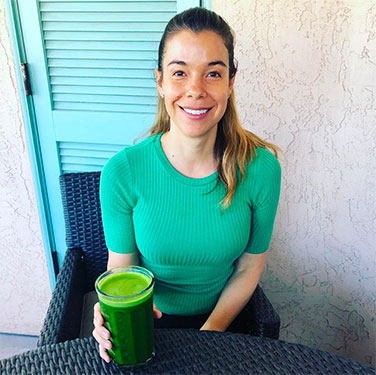
Vitamin K1, once absorbed by the body, is prioritized for use in the liver to produce proteins essential for blood clotting. When that task is satisfied, then the level of K1 increases in the blood and helps to transport calcium for use around the body.
Unfortunately, many people are low in vitamin K1, and therefore may have inadequate levels of K1 to support adequate calcium transport. The NHANES 2011-2012 study found only 57% of men and 37.5% of women (N = 4,306) met the “adequate intake” of K122Vegetables and Mixed Dishes Are Top Contributors to Phylloquinone Intake in US Adults: Data from the 2011-2012 NHANES – Harshman et al. (2017). This could lead to increased cardiovascular risk as a result23Circulating uncarboxylated matrix Gla protein, a marker of vitamin K status, as a risk factor of cardiovascular disease – van den Heuvel et al. (2014), although more research needed.
So where does the vitamin K2 supplementation come in?
Whilst vitamin K1 is prioritized for use in the liver, vitamin K2 appears to be prioritized for use in the periphery, which will support calcium transport24The relationship between vitamin K and peripheral arterial disease – Vissers et al. (2016).
In terms of supplementing K2 (menaquinone), there are two key forms; MK4 & MK7. MK7 has a longer half-life, but MK4 is more studied.
How Rhonda gets her vitamin K:
- Previously (in her October 2024 Q&A) she mentioned using Pure Encapsulations D3 & K2 (see 20% off coupon code). Each serving contains 100 mcg of K2 MK-7.
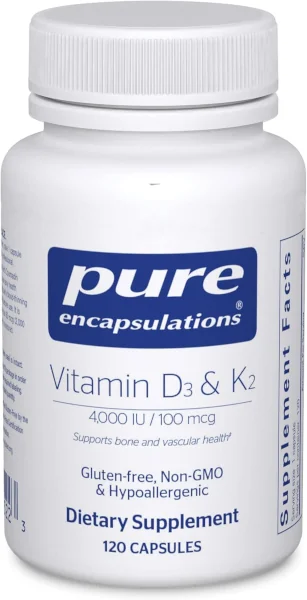
However, in her June 2025 Q&A she mentioned only taking 2,000 IU extra per day. Given this supplement contains 4,000 IU of vitamin D she must be using another source to get her vitamin D + K2.
Sources include:
- NOW – K2 MK-7 – 100 mcg capsules (see 20% off coupon code)
- Jarrow – K2 MK-7 – 90 mcg capsules (see 20% off coupon code)
- Carlson – K2 MK-7 – 45 mcg capsules (see 20% off coupon code)
Melatonin
Melatonin is a hormone produced by our bodies to regulate the sleep-wake cycle. We produce melatonin as the sun sets and night sets in, and we reduce production as the sun rises and our body preps for wakefulness.
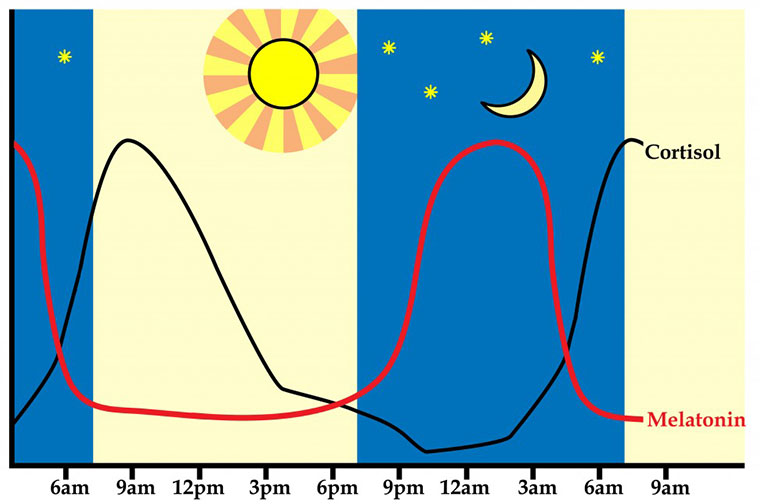
Rhonda suggests that melatonin can be useful as we age (particularly for those 50+) because our natural production decreases over time.
As of Rhonda’s Q&A #71 (June 2025) she said she’s taking 3 mg before bed.
Prior to this she typically took a much higher dose (~10 mg).
Her primary purpose, and the reason for the high dose, she says, is to keep her night terrors at bay.
For those without night terrors, it’s common to take a lower dose. For example, this research by MIT found that 300 mcg per night was of benefit to the participants. Life Extension makes a 300 mcg version (link).
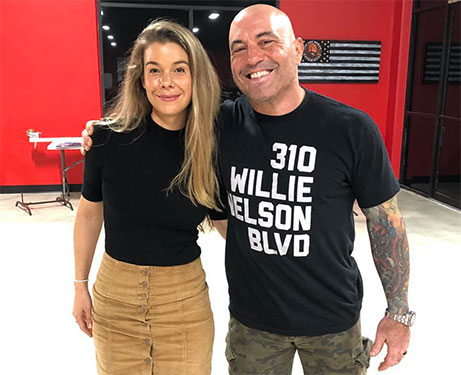
The specific figure of around 10 mg likely comes from a string of research papers on sleep disruption, where ~9mg was the dose used.
Rhonda mentioned in her Feb 2021 Q&A she takes melatonin by Pure Encapsulations – possibly Pure Encapsulations – Melatonin 3mg (see 20% off coupon code).
In addition to this, her night routine includes a sauna or hot tub 2-3 hours before bed.
Rhonda’s Dosage: 10 mg / nightly

Vitamin C
In Q&A #71 Rhonda mentioned taking vitamin C in the evenings.
Vitamin C is an essential micronutrient, well known for its antioxidant properties.
Rhonda has a comprehensive topic page that covers many details on vitamin C.
She previously took it daily via a supplement called Pure Encapsulations – Ester C, which includes 619 mg per 1 capsule serving.
In addition, the supplement also has 50 mg of quercetin and 100 mg of rutin – both flavonoids with potential health benefits.
Additional brands that offer vitamin C:
- Swanson – Vitamin C – 500 mg (combined with calcium to be pH neutral) (see 20% off coupon code)
- Life Extension – Vitamin C – 1,000 mg (with a small amount of quercetin) (see 20% off coupon code)
- NOW – Vitamin C – 1,000 mg (with 25 mg of Rose hips) (see 20% off coupon code)
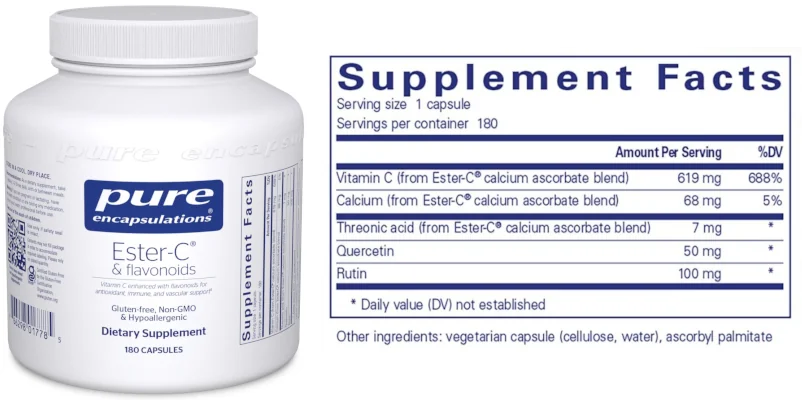
Ubiquinol
In Q&A #71 Rhonda mentioned taking ubiquinol in the evenings.
You may already be familiar with a supplement called Coenzyme Q10.
CoQ10 comes in two common forms; ubiquinone (the oxidized form) and ubiquinol (the reduced form).
The version Rhonda is taking (ubiquinol, the reduced form) is proposed to be more bio-available than ubiquinone25Increased Bioavailability of Ubiquinol Compared to Ubiquinone – Aoki et al. (2014).
She describes ubiquinol as playing an important role in mitochondrial energy production.
Whilst Ubiquinol is naturally found naturally in our diets, Rhonda said in her Jan 2023 Q&A she was supplementing an additional 200 mg per day. Then, in her July 2023 Q&A, partly due to cost, she mentioned switching down to 100 mg per day.
However, she said if she was on a statin, which she isn’t, she might take 200 mg per day instead.
She was specifically using Pure Encapsulations – Ubiquinol-QH 100mg (see 20% off coupon code).
This product is noticeably expensive, even for ubiquinol. It uses “Kaneka” brand ubiquinol, which is also used by more affordable products such as:
- NOW Ubiquinol – 100 mg (see 20% off coupon code)
- Jarrow Ubiquinol – 100 mg (see 20% off coupon code)

Inositol

Rhonda first mentioned taking inositol in her Jan 2024 Q&A (#55) – taking around 1 scoop (2 grams) of inositol before bed to improve her sleep quality.
Then in her June 2025 Q&A (#71) she again mentioned taking it.
Inositol is a type of sugar, found in the brain and other tissues, which mediates cell signal conversion in response to hormones, neurotransmitters and growth factors.
When these external signals reach the cell they are converted into internal messengers, for which myo-inositol is involved11.
There doesn’t appear to be a ton of research proving its benefits in sleep, but for example there’s a study in pregnant women that found it improved sleep quality and duration.
The product she likely uses is Pure Encapsulations Inositol, which is a powdered version.
Examples of other (capsulated) brands include:
- Life Extension – Inositol – 1,000 mg per capsule (see 20% off coupon code)
- Jarrow Formulas – Inositol – 750 mg per capsule (see 20% off coupon code)
Supplements Rhonda Uses Intermittently
So far we’ve covered supplements that Rhonda has said she takes on a daily basis. In this next section, we’ll cover supplements Rhonda takes intermittently.
Protein Powder
Rhonda uses protein powder as a way to increase her daily protein intake.
According to Q&A #57 (March 2024), she has a few criteria when choosing which to take:
- She prefers whey isolate to whey concentrate because, broadly speaking, isolate has a higher protein content, less lactose, less fat, and less calories.
- She prefers whey powder from grass-fed cows, as the omega-3 to omega-6 ratio is better. Specifically, higher in omega-3s and lower in omega-6s, compared to the non-grass-fed versions. Organic if possible.
- She prefers cold processed or micro-filtered protein, as it contains more of the micronutrients found in whey.
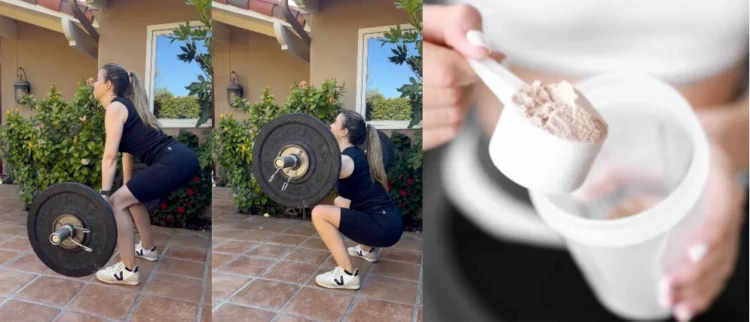
According to her August 2024 Q&A she’s currently using two brands:
- Thorne – Whey Protein Isolate – Chocolate
- Simply Tera’s Organic Whey Protein – Unsweetened
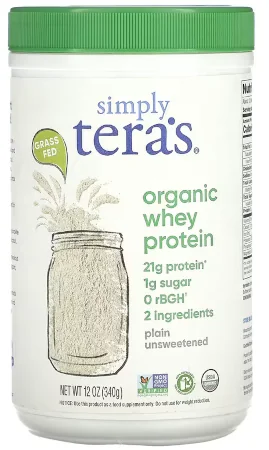
Rhonda’s criteria for protein powder is very similar to Peter Attia, who uses a brand called Promix (see 1:48:23 on YouTube where they discuss this).
They make a Grass Fed Whey Isolate version which comes in chocolate, vanilla and unflavoured versions. For 10% off Promix orders, see this discount code.
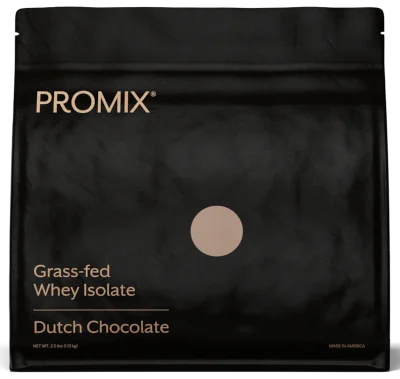
Collagen Powder
Rhonda discusses using collagen powder daily to benefit her skin, hair and joints.
She consumes it by adding it to her smoothies, coffee and sometimes tea.
She has mentioned at least 2 studies that established here interest:
- A study that showed peptides in collagen actually make it intact to cartilage, which suggests it’s beneficial for joint health (source).
- A study showing that in (26) healthy females, displaying visible signs of natural and photoaging in the face, daily supplementation with 1 gram of collagen powder for 12 weeks led to a 76% reduction of skin dryness/scaling and a 13% decrease in global lines and wrinkles. Also, an 18% increase in the content of hemoglobin was found in the skin dermis suggesting improved microcirculation (study source).
See Rhonda’s Instagram post on collagen for more info.
She’s currently using Verisol’s patented collagen formula, specifically the product by Besha for it’s skin health benefits.
Verisol collagen has the following properties:
- Improved absorption and bioavailability – Enzymatically broken down into smaller peptides with an optimal molecular weight (2–5 kDa) for absorption and bioavailability.
- Specific amino acids – Engineered for specific amino acid sequences that stimulate collagen production in skin fibroblast cells.
- Targeted – it’s optimized peptide structure ensures delivery to the dermis and effective interaction with skin metabolism.
- High Amino Acid Content: Rich in glycine, proline, and hydroxyproline, essential for collagen synthesis and skin repair.
They have at least 5 studies to back this up:
- Reduces wrinkles and fine lines
- Increases skin elasticity
- Improves skin surface structure (decreases cellulite)
- Increases hair thickness
- Improves nail growth and strength
With the diagram below illustrating these results (also see bigger version).

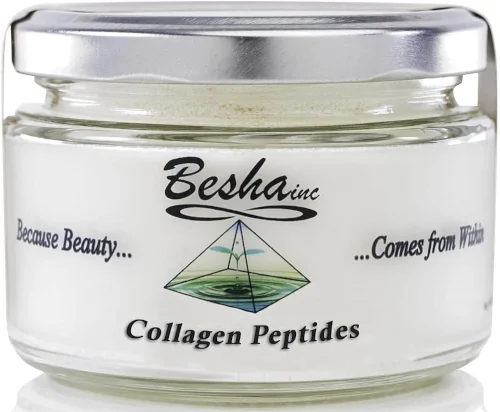
She also mentions using Sparkle’s collagen product, which again uses the Verisol patented formula. This version comes in a range of flavors, also including unflavored.
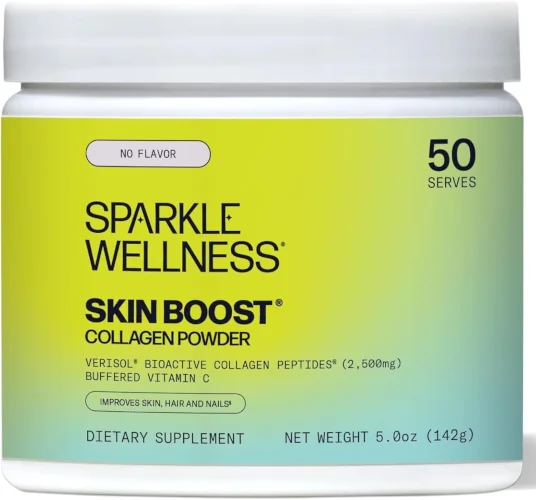
Curcumin
Rhonda continues to take a curcumin phytosome supplement, sometimes known as Meriva, for its anti-inflammatory effects. Noting it also doubles as a (weak) alternative to painkillers.
She was previously taking the Thorne Meriva version – but later (February 2021) mentioned taking the Pure Encapsulations – CurcumaSorb (see 20% off coupon code).
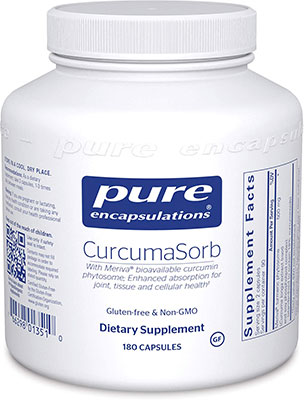
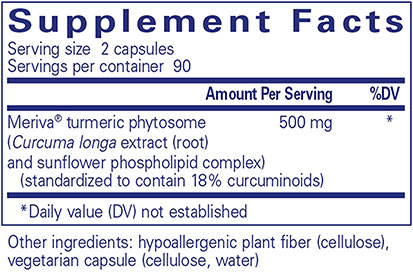
Related to curcumin, Rhonda discussed the herb it’s derived from, Turmeric, in an Instagram post (link). She expressed her concern about lead chromate being added to turmeric during processing to enhance the yellow color.
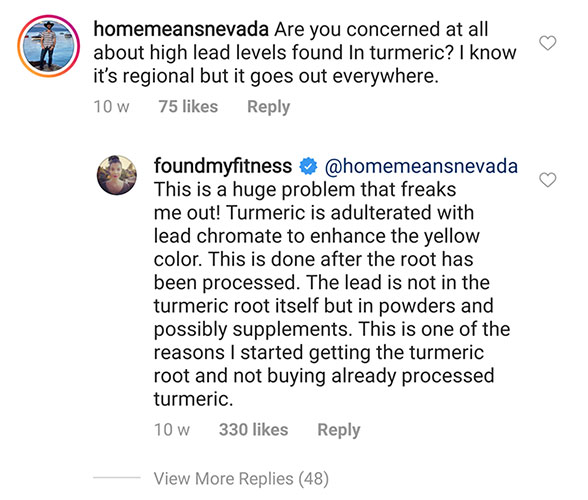
Note: the easiest way to find this comment thread on her Instagram is to open the post via the Instagram mobile app – where this is the top comment. If instead you view it via a web browser, then the comment isn’t at the top, and it may be hard to locate.
For more info on turmeric and lead chromate, see these studies:
- Ground Turmeric as a Source of Lead Exposure in the United States – link
- Lead chromate pigments added to turmeric threaten public health across Bangladesh – link
Rhonda continues to utilize turmeric in its organic form (which doesn’t have lead chromate added) – both as juices and in smoothies. It has a host of potential benefits, including:
- A randomized controlled trial showed that a bioavailable form of curcumin improved memory in older people with mild memory complaints. The curcumin group had a 28% improvement in their memory/attention abilities and fewer amyloid plaques and tau tangles in the brain, compared to the placebo. The latter (amyloid plaques and tau tangles) affect optimal brain function and are hallmarks of Alzheimer’s disease.
- Additionally, a double-blind, randomized and placebo-controlled trial showed antidepressive effects in patients with major depression26Add-on Treatment with Curcumin Has Antidepressive Effects in Thai Patients with Major Depression: Results of a Randomized Double-Blind Placebo-Controlled Study – Kanchanatawan et al. (2018).
The bioavailability of curcumin can be increased with the addition of fat and a component of black pepper called piperine. For fat sources, Rhonda adds avocado to her smoothies that have turmeric (see her Instagram post on this).
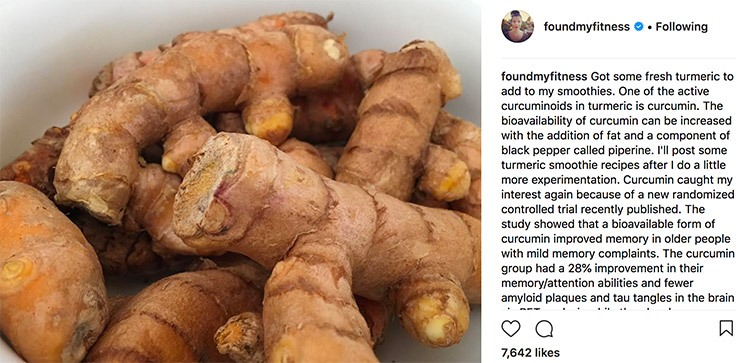
Choline
Choline is an essential micronutrient that plays crucial roles in:
- Preserving cell membrane structure
- Produce the neurotransmitter acetylcholine, important for memory, mood, muscle control, and other brain and nervous system functions
- Important roles in modulating gene expression, cell membrane signaling, lipid transport and metabolism, and early brain development
Rhonda aims to get the majority of choline from her diet. Eggs are a particularly potent source, so she typically has a breakfast that includes eggs. Other good sources are meat, fish, potatoes and wheat germ.
When asked in a members Q&A #51 (Sept 2023) which choline supplement she likes, she specifically named Pure Encapsulations – Choline Bitartrate. It’s 275mg of choline per capsule. For context, the RDA for adult women is 425 mg/day.

Probiotics
Rhonda is keenly aware of the importance of a healthy gut microbiome, and probiotics play a role in that.
At one stage she was taking Visbiome probiotics every few weeks, to top up her healthy gut bacteria.
However, now Rhonda only takes Visbiome after drinking alcohol. She said that if she had to take antibiotics for some reason, then she would take Visbiome probiotics after, in order to replenish the healthy gut bacteria.
For example, probiotics can help regulate the innate and adaptive immune responses by modulating the functions of dendritic cells, macrophages, and T and B lymphocytes27Mechanisms of probiotic action: Implications for therapeutic applications in inflammatory bowel diseases – Vanderpool et al. (2008)28Probiotics: progress toward novel therapies for intestinal diseases – Yan et al. (2010).
Visbiome comes in sachet and pill form. Rhonda opts for the sachets which contain 4x as many live bacteria.
Before switching over to Visbiome, Rhonda was taking VSL #3 probiotic, which had been the subject of over 25 published studies, showing efficacy in IBS, IBD, colitis and c. diff. However, it turns out the new formulation of VSL #3 differs significantly from the old one29P884 No shared mechanisms among “old” and “new” VSL#3: Implications for claims and guidelines – C De Simone (2018), and thus should be treated with caution at minimum, and at maximum, avoided. I mention this section because for some people Visbiome is hard to get hold of, and up until now, it was thought VSL #3 was a satisfactory alternative. Below are the details:
VSL #3 was created by Professor Claudio De Simone, and produced by VSL Inc. All the clinical studies before 2016 were performed on the “original formula” of VSL#3. However, when Di Simone parted ways with VSL Inc. in 2016, manufacturing was switched from the USA to Italy and the formulation was changed. Between 2016 and 2019, VSL Inc. claimed that the beneficial effects of the formula remained the same. However, in a federal lawsuit that concluded in 2019, VSL Inc. was found liable for false advertising related to the composition and clinical history of the new VSL #3 formula. This was in part backed up by a study30P884 No shared mechanisms among “old” and “new” VSL#3: Implications for claims and guidelines – C De Simone (2018) performed by De Simone, showing that the new VSL#3 formula was materially different to the old one.
For those looking for the benefits of the original VSL# 3 formula, this continues to exist under the Visbiome brand.
Dosage: 1 sachet/every 1-2 weeks
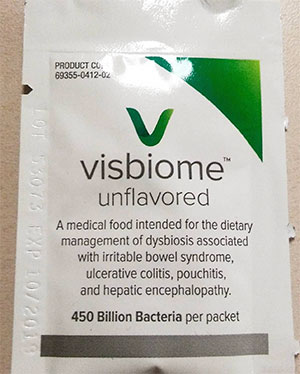
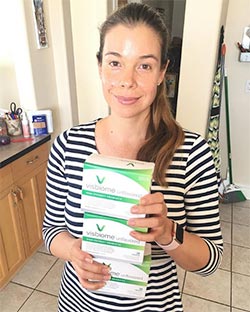
Nootropics
Nootropics are products aimed at improving cognitive function, and in Rhonda’s June 2021 members Q&A she updated us on her preferred nootropic, which she consumes in the form of a drink.
First though, she caveats by saying her foundations for maximizing cognitive function are:
- Good quality sleep – see this post for how she optimizes her sleep
- Regular cardio exercise – such as running/spin bike
- Intermittent fasting – such that she stays in ketosis throughout the morning while she works
- Consuming sulforaphane – which raises glutathione in the brain, lowering oxidative stress + inflammation
- High dose fish oil – of which the DHA is key for brain function
Now let’s look at Rhonda’s nootropic drink. It contains:
- Lion’s Mane Mushroom – she preferences Laird’s Performance Mushrooms blend
- Cocoavia Cocoa powder – 1 sachet (15% off coupon code)
- A 50/50 split between coconut powder and MCT powder
- Stevia – to make it taste nice
- Cinnamon powder
- Water
She says it’s like dynamite for the brain, and she feels “on fire” with it” 🔥
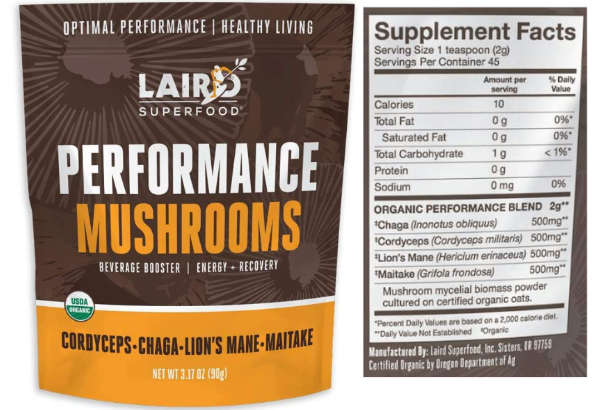
In the mornings she limits herself to just 1 coffee, to which she sometimes adds the Laird’s mushroom blend mentioned above. Then, if she wants an extra boost, she will make the nootropic drink. She adds a couple of important caveats:
- The cocoa powder naturally contains a small amount of caffeine, so she avoids drinking the mix too late in the day, as that can impact sleep quality.
- She avoids using a dairy creamer because dairy contains a protein that can inhibit the flavonoids in the cocoa.
In terms of an estimate on dosage for the Lion’s Mane, Rhonda cites a study (source) that showed significant improvements in cognitive function after 8 weeks of 3g per day vs placebo – for 50-80-year-olds with existing cognitive impairment.
When exposed to viral risk
Vitamin C – Liposomal
Vitamin C is an essential micronutrient, well known for its antioxidant properties.
Rhonda has a comprehensive topic page that covers many details on vitamin C.
A few studies suggest that oral bioavailability of vitamin C can be increased when consumed in liposomal form.
Rhonda uses:
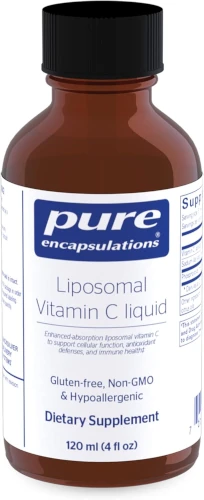
Zinc Lozenges
Zinc plays a crucial role in immune function.
While Rhonda doesn’t take zinc daily, she keeps Zinc Lozenges on hand for specific situations, such as:
- At the first sign of a cold
- When traveling by air
- During times of increased immune stress
Rhonda names using this brand – comes in two flavors:
- Life Extension – Zinc Lozenges – Orange flavor – (see 20% off coupon code)
- Life Extension – Zinc Lozenges – Mint flavor – (see 20% off coupon code)
Dose: 80-100mg per day
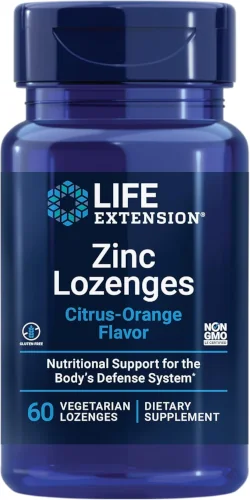
This ends the main list of supplements.
Rhonda’s “Top 5” Highest Priority Supplements
When Rhonda was asked her top supplements, she responded with the below list. Meaning that if she could only take 5 supplements from the list, this is what she would take:
- Vitamin D – because it can be hard to get enough sun exposure all year round to meet ideal targets
- Omega-3 Fish Oil – this has lots of health benefits, but again, many people don’t eat enough fatty fish to reach optimal levels
- Multivitamin – to catch any dietary insufficiencies that one may be unaware of
- Magnesium – due to industrial farming methods, which decrease top soil quality, and poor diets, many people don’t get enough of this very important mineral, which is particularly useful for cellular repair
- Sulforaphane – Rhonda speaks of it’s great detoxification benefits
Each of those links takes you to the supplement section above so that you can read/learn more about them.
Rhonda’s Pregnancy, Breastfeeding & Toddler Supplements
See this detailed post for the details on which supplements Rhonda took during pregnancy and breastfeeding.
Then separately see this post on the supplements Rhonda gave to her growing toddler.

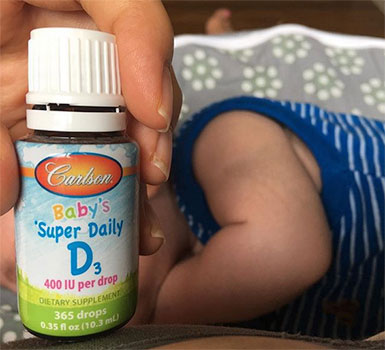
Rhonda’s Method for Choosing Supplement Brands
The supplement industry, surprisingly, is largely unregulated. Particularly when compared to the stringent regulations that are imposed on the pharmaceutical industry. This amplifies the importance of choosing a supplement that you can rely upon.
In a Tim Ferriss interview Rhonda recommended that you check if the supplement brand you’re looking to buy is certified by the NSF (National Sanitary Foundation). Their role is to independently test and certify supplements, to ensure they do not contain undeclared ingredients or contaminants.
As a guideline, below is the list of brands that Rhonda often uses (either currently, or in the past):
- Pure Encapsulations – see their NSF certification
- Thorne Research – see their NSF certification
- Life Extension – see their NSF certification
Then separately, Rhonda has discussed using Labdoor and Consumer Lab in order to check products for contaminants such as heavy metals.
Closing Remarks
If you’ve got any queries on the above, please leave them below in the comments.
If you value the research and content that Rhonda is putting out, consider signing up to become a premium member on her site.
Firstly, this crowd-sponsored support allows her to continue to work independently, without being reliant on sponsors or grants. Secondly, premium members get a number of exclusive benefits, including members-only emails, monthly Ask Me Anything live streams, and open access to use her genetics reports.
Post Change Log
For those interested, see the change log for a list of content updates over time.
Further Reading
- Rhonda Patrick’s Diet – including examples of her breakfast, lunch and dinner
- Rhonda Patrick on Pregnancy & Breastfeeding – notes on many of the key things Rhonda has discussed about pregnancy, breastfeeding & baby health – based on her journey into motherhood
- Supplements for Children – the supplements Rhonda discussed giving to her toddler
References
- 1Omega-3: A Link between Global Climate Change and Human Health – Jing X. Kang | 2011 | Biotechnology Advances
- 2Metabolism of α-linolenic acid in humans – G.C. Burdge | (see section 7.2 of paper) | 2006 | Journal: PLEFA
- 3Metabolism of α-linolenic acid in humans – G.C. Burdge | (see section 7.2 of paper) | 2006 | Journal: PLEFA
- 4Blood docosahexaenoic acid and eicosapentaenoic acid in vegans: Associations with age and gender and effects of an algal-derived omega-3 fatty acid supplement – Sarter et al. | 2014 | Clinical Nutrition
- 5Blood docosahexaenoic acid and eicosapentaenoic acid in vegans: Associations with age and gender and effects of an algal-derived omega-3 fatty acid supplement – Sarter et al. | 2014 | Clinical Nutrition
- 6Blood n-3 fatty acid levels and total and cause-specific mortality from 17 prospective studies – Harris et al. | 2021 | Nature Communications
- 7The Omega-3 Index: Clinical Utility for Therapeutic Intervention | William Harris | 2010 | Current Cardiology Reports
- 8The pharmacology of the antioxidant lipoic acid, Bianchetti | 1997 | General Pharmacology
- 9
- 10Dark chocolate supplementation reduces the oxygen cost of moderate intensity cycling – Patel et al. (2015)
- 11
- 12
- 13
- 14
- 15Cadmium and lead in cocoa powder and chocolate products in the US Market – Abt et al (2017)
- 16
- 17Enhancing dentate gyrus function with dietary flavanols improves cognition in older adults – Brickman et al. (2014)
- 18
- 19
- 20Suboptimal magnesium status in the United States: are the health consequences underestimated? – Rosanoff et al. (2012)
- 21Vitamin D: A Micronutrient Regulating Genes – Carsten Carlberg | 2019 | Current Pharmaceutical Design
- 22
- 23Circulating uncarboxylated matrix Gla protein, a marker of vitamin K status, as a risk factor of cardiovascular disease – van den Heuvel et al. (2014)
- 24The relationship between vitamin K and peripheral arterial disease – Vissers et al. (2016)
- 25Increased Bioavailability of Ubiquinol Compared to Ubiquinone – Aoki et al. (2014)
- 26
- 27Mechanisms of probiotic action: Implications for therapeutic applications in inflammatory bowel diseases – Vanderpool et al. (2008)
- 28Probiotics: progress toward novel therapies for intestinal diseases – Yan et al. (2010)
- 29P884 No shared mechanisms among “old” and “new” VSL#3: Implications for claims and guidelines – C De Simone (2018)
- 30

